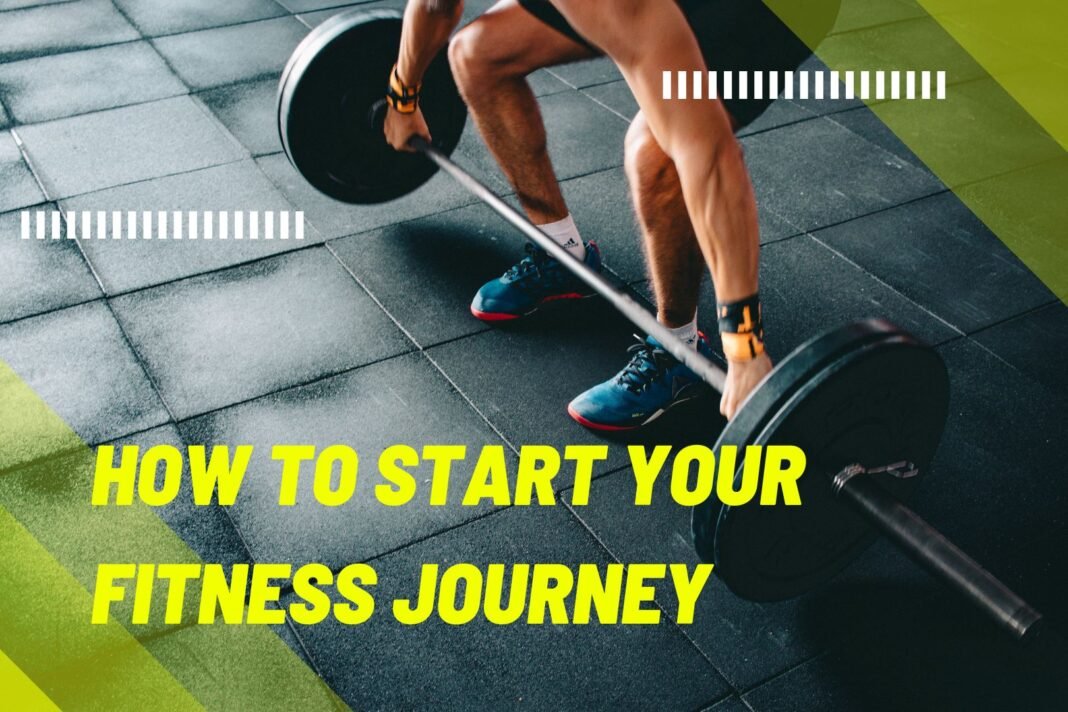Starting your fitness journey can feel overwhelming, but with the right approach, anyone can build a healthier lifestyle. Whether your goal is to lose weight, gain muscle, or improve overall health, this guide will help you confidently take the first step. We’ll cover everything from setting goals to creating an effective exercise plan and staying consistent.
Step 1: Set Clear and Realistic Fitness Goals
Why Goal Setting is Important
Setting clear goals keeps you motivated and focused. Without a goal, it’s easy to lose direction and quit. Your goals should be SMART:
- Specific – Define exactly what you want to achieve.
- Measurable – Track your progress over time.
- Achievable – Set realistic expectations.
- Relevant – Align goals with your lifestyle and interests.
- Time-bound – Give yourself a deadline for achieving your goal.
Examples of Fitness Goals
- Lose 10 pounds in 3 months
- Run a 5K race in 2 months
- Gain 10 pounds of muscle in 6 months
- Exercise 4 times a week for the next 3 months
Step 2: Choose the Right Exercise Plan
Types of Exercises
Understanding different types of exercises will help you decide what fits your goals best:
- Cardio (Aerobic Exercise) – Improves heart health and burns calories (e.g., running, cycling, swimming, walking).
- Strength Training – Builds muscle and increases metabolism (e.g., weightlifting, resistance band exercises).
- Flexibility & Mobility – Improves movement and prevents injuries (e.g., yoga, stretching).
- High-Intensity Interval Training (HIIT) – Short, intense workouts that burn fat efficiently.
How to Create a Beginner Exercise Plan
A well-balanced beginner exercise plan should include:
- 3-4 days of exercise per week
- 30-45 minutes per session
- A mix of cardio, strength training, and flexibility exercises
- Rest days to allow muscle recovery
Sample Weekly Exercise Plan
| Day | Exercise Type |
|---|---|
| Monday | Full-body strength training |
| Tuesday | 30-minute brisk walk or jog |
| Wednesday | Rest or yoga |
| Thursday | Strength training (upper body) |
| Friday | HIIT workout or cycling |
| Saturday | Strength training (lower body) |
| Sunday | Rest or light stretching |
Step 3: Focus on Proper Nutrition
The Role of Diet in Fitness
Exercise alone won’t bring results if your diet is poor. Proper nutrition supports muscle growth, fat loss, and overall energy levels.
Essential Nutrition Tips for Beginners
- Eat Protein-Rich Foods – Helps build and repair muscles (e.g., chicken, eggs, fish, lean beef, tofu, beans).
- Include Healthy Carbohydrates – Provides energy for workouts (e.g., whole wheat bread, brown rice, quinoa, oats, sweet potatoes).
- Consume Healthy Fats – Supports heart health (e.g., avocados, nuts, olive oil, salmon).
- Stay Hydrated – Drink at least 8-10 glasses (64-80 oz) of water daily.
- Limit Processed Foods – Reduce sugar, fast food, and sugary drinks.
Step 4: Develop a Consistent Routine
How to Stay Motivated
- Start Small – Don’t try to do everything at once; build habits gradually.
- Find a Workout Buddy – Exercising with a friend keeps you accountable.
- Track Your Progress – Use a fitness journal or mobile app.
- Celebrate Small Wins – Acknowledge improvements to stay encouraged.
- Make Exercise Fun – Choose activities you enjoy, such as hiking, dancing, or playing sports.
Step 5: Avoid Common Beginner Mistakes
Mistakes to Watch Out For
- Skipping Warm-Ups and Cool-Downs – Increases injury risk.
- Overtraining – Leads to burnout and muscle fatigue.
- Not Getting Enough Rest – Muscles need time to recover and grow.
- Focusing Only on One Exercise Type – Balance is key for overall fitness.
- Ignoring Nutrition – Fitness is 80% diet and 20% exercise.
Step 6: Monitor Your Progress & Adjust Accordingly
Ways to Track Your Fitness Journey
- Take Progress Photos – Helps visualize changes.
- Measure Body Metrics – Use a measuring tape or a body composition scale.
- Track Workouts – Log your exercises and weights used.
- Assess How You Feel – Improved energy, better sleep, and increased strength are signs of progress.
When to Adjust Your Routine
- If you hit a plateau, increase workout intensity.
- If workouts feel too easy, add weight or reps.
- If you’re overly tired, allow more rest days.
Conclusion
Starting your fitness journey doesn’t have to be complicated. By setting clear goals, choosing the right exercises, following a balanced diet, staying consistent, and tracking progress, you can build a healthier, stronger body. Fitness is a lifelong commitment, and small steps lead to big results. Stay motivated and enjoy the journey!
Call to Action
Are you ready to start your fitness journey? Share your goals in the comments and let us know how we can help!


